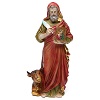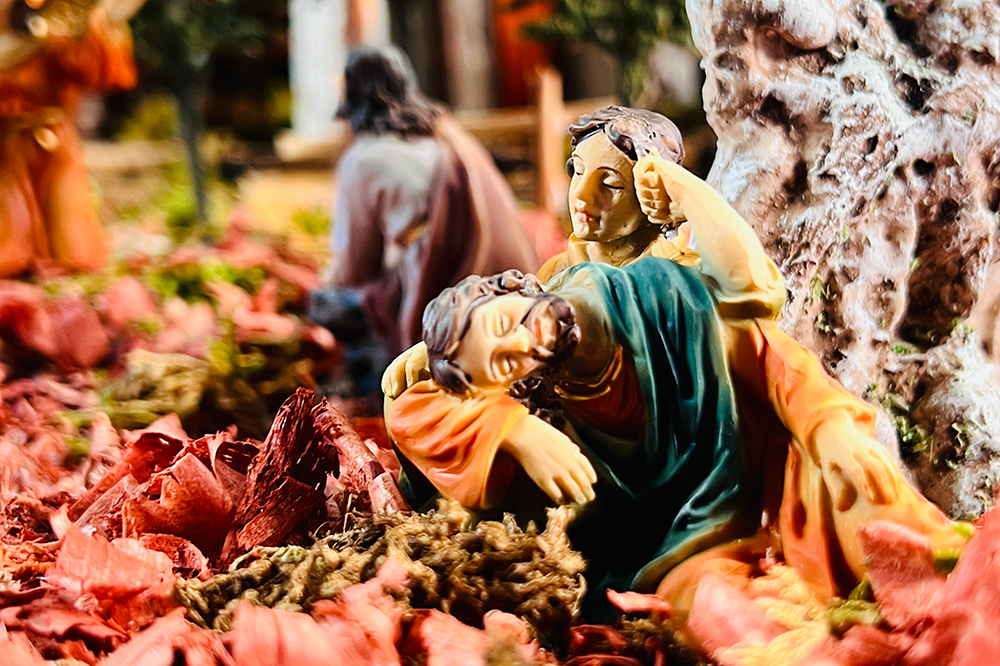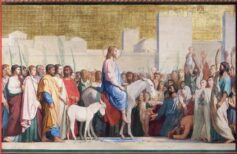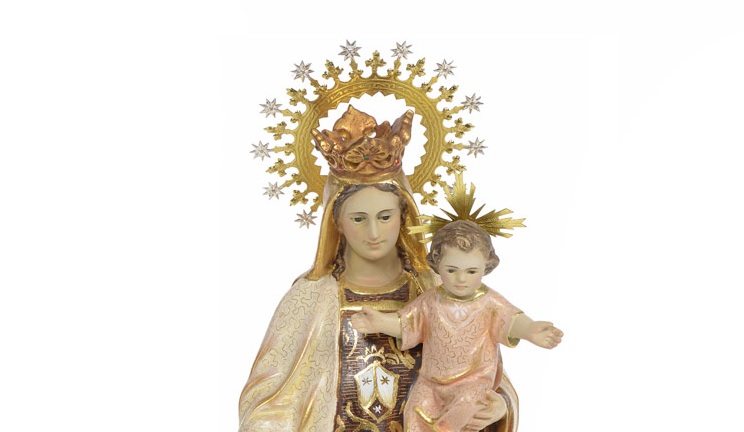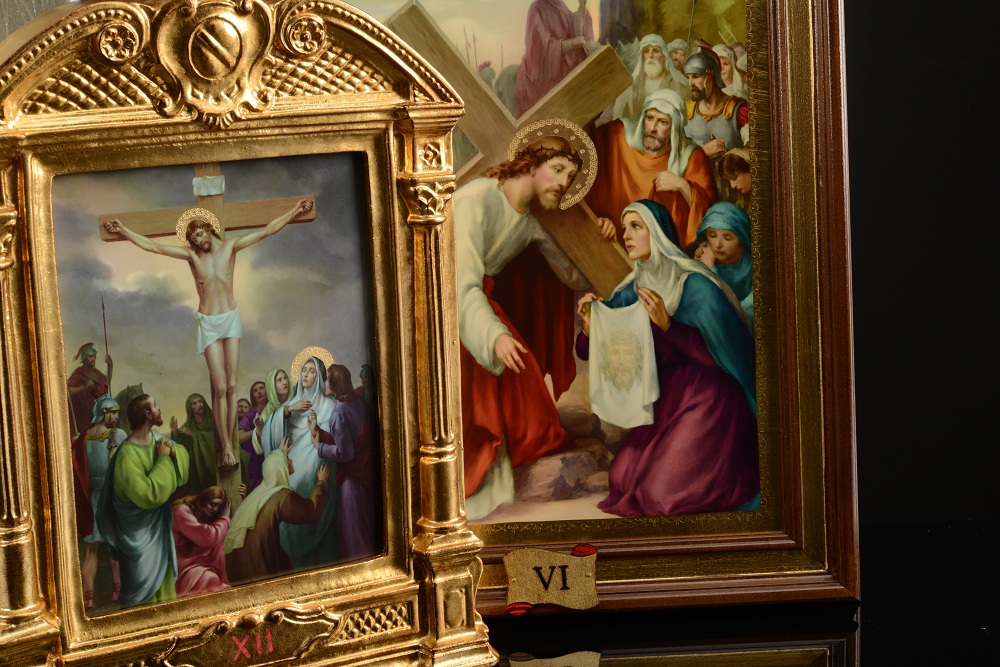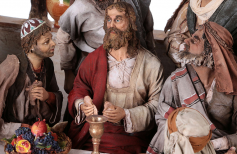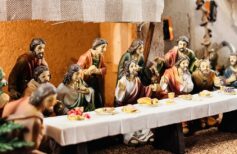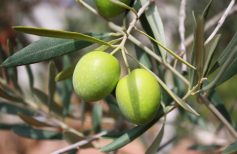The Mount of Olives has since ancient times been a place of mysteries, the scene of great biblical events. This is where the Passion of Jesus begins.
Contents [hide]
Scripture does not only speak of characters and events related to the history of the Faith. We have seen how there are references to trees and flowers that hold various symbolic meanings, as well as animals that become emblems and embodiments of spiritual concepts and mysteries. But there are also references in the Bible to special places that were the scene of pivotal events for Christians, and which retain the essence and deepest meaning of those events even today. One of those places is the Mount of Olives.
It is a hill that still stands to this day east of Jerusalem, and was once covered with olive trees, indeed, from which it got its name. Instead, the Arabs call it Jabal at-Tur, “Mount of the Summit,” but also “mountain par excellence,” “holy mountain.” Here, at the foot of the Mountain, once stood Gethsemane, better known as the Garden of Olives, a small plot of land in which Jesus withdrew in prayer and dialogue with God after the Last Supper, shortly before He went to meet His destiny.
But more generally, the Mount of Olives is mentioned in the Scripture as the setting of important events in the history of Christianity. Let’s see which ones.

Trees and plants in the Christian tradition
In ancient times, the relationship between man and nature was much closer than itis today…
The biblical episodes that occurred on the Mount of Olives.
The prophet Zechariah is the first to mention the Mount of Olives. If his prophecies are correct, it will be from the Mount of Olives that all the dead will begin to rise at the end of time, to welcome the return of Jesus: “On that day his feet shall stand upon the Mount of Olives which is opposite Jerusalem toward the east, and the Mount of Olives shall cleave in two, from east to west, forming a very deep valley; one half of the mount shall withdraw toward the north, and the other toward the south” (Zech 14:4). This is the reason why Jews began using the mount as a burial place from ancient times, and even today they are willing to pay considerable sums of money to be able to rest there. In fact, the Jewish cemetery still stretches across the slope of the Mount of Olives. It is more than three thousand years old and is the oldest cemetery in the world. You can visit it and walk among the more than 150,000 graves, some recent, some very old and almost completely obliterated by the slow and relentless erosion of time.
The Mount of Olives was also the scene of the sacrifice of the red heifer, a ritual of atonement sanctioned by Moses (Numbers 19:1-10): a red heifer that was never supposed to have borne the yoke was led to the Mount, killed, cut into pieces, and burned with cedar wood, hyssop (an aromatic plant). Woolen cloth dyed red was also laid on the stake. Eventually the ashes were collected and poured into a container filled with pure water, intended to be sprinkled on those who needed to be purified.
When Absalom usurped the throne of his father, King David, the latter took refuge in the Cedar Valley, on the border between the Mount of Olives and Jerusalem. Jesus would travel the same route in the opposite direction a thousand years later, returning from Jericho on a donkey that would take him to Jerusalem, in tears at the sight of the remains of the Holy City (Luke 19).
The town of Bethany, from where Lazarus, Martha and Mary, Jesus’ friends, and Simon, the leper He healed, also stood on the eastern slopes of the Mount of Olives.
The Mount of Olives would also be where Jesus’ Ascension to Heaven took place. Luke speaks of it in his Gospel, telling of the encounter with the disciples on the road between Bethany of Judea and Jerusalem (Luke 24:51), and in the Acts of the Apostles we read, “And because they were gazing up to heaven as he went, behold, two men in white robes came to them and said, ‘Men of Galilee, why are you gazing up to heaven? Jesus, who was from among you taken up to heaven, will return one day in the same way you saw him go to heaven.” Then they returned to Jerusalem from the mountain called the Mount of Olives, which is as close to Jerusalem as the way allowed on a Sabbath” (Acts 1:10-12).
For this reason the Mount of Olives is also called the Mount of Ascension.
There is also a cave where, according to Gospel tradition, Jesus taught the disciples the Lord’s Prayer.
During the siege of Jerusalem in A.D. 70, which saw the destruction of the Second Temple, Roman soldiers camped on the Mount.
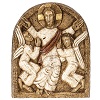
Gethsemane or Garden of Olives.
We have mentioned Jesus in the Garden of Olives. Here is how the Gospels recount that last evening that marks the beginning of Jesus’ Passion: “Then Jesus went with them to an estate, called Gethsemane, and said to the disciples, Sit here, while I go there to pray” (Matthew 26:36). Left alone, Jesus turns to God the Father. He is tired, seized with doubts he did not have before, and he asks God whether his sacrifice is really necessary: “And having gone a little further, he threw himself with his face to the ground, praying, and saying, My Father, if it is possible, may this cup be taken from me. Yet not as I will, but as you will.'” (Matthew 26:39). In the end, however, He accepts His own destiny and prepares to face the Passion and death.
“Here came Judas, one of the Twelve, and with him a great crowd with swords and clubs, sent by the high priests and elders of the people. The traitor had given them this sign, saying, The one I will kiss, it is he; arrest him!” (Matt. 26:47-48)
Jesus’ agony in Luke’s Gospel
Although the episode in the Garden of Olives is present in all the Gospels except John’s, it is Luke‘s Gospel that most poignantly recounts Jesus’ agony in Gethsemane, the first and irretrievable step toward the Passion. “Then an angel appeared to him from heaven to strengthen him. And being in agony, he prayed even more intensely; and his sweat became like large drops of blood falling to the ground” (Luke 22:43-44). Christ’s suffering is almost palpable, His inner struggle becomes real in that blood oozing from His body, almost a prophecy of the pain and suffering to come. Alone, abandoned by His sleeping friends, lost before God the Father who does not answer Him, truly His agony is one of the highest and most significant moments of His mission in the world.
Even today the Franciscans guard these places, where, in memory of the sufferings suffered by Jesus, today stands the Basilica of the Agony, or Church of All Nations. From a small olive grove of centuries-old trees the friars still produce a precious oil.
